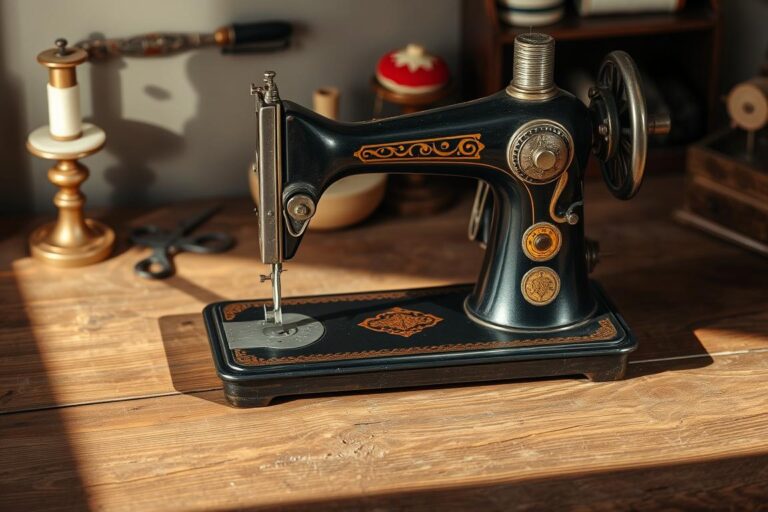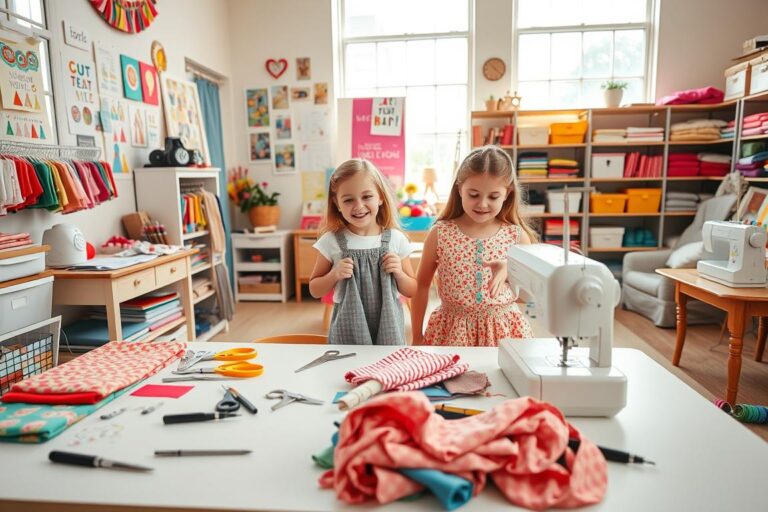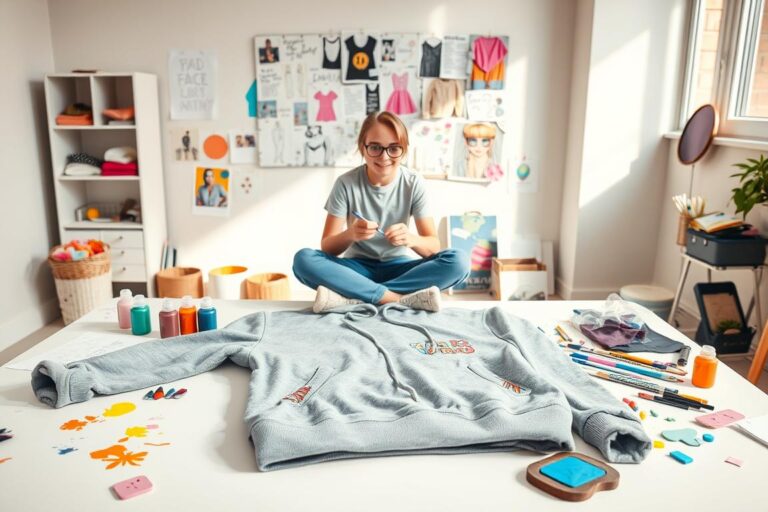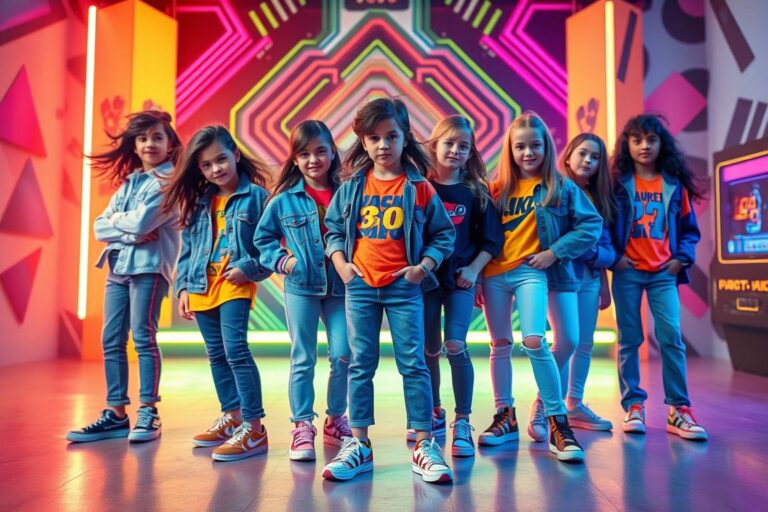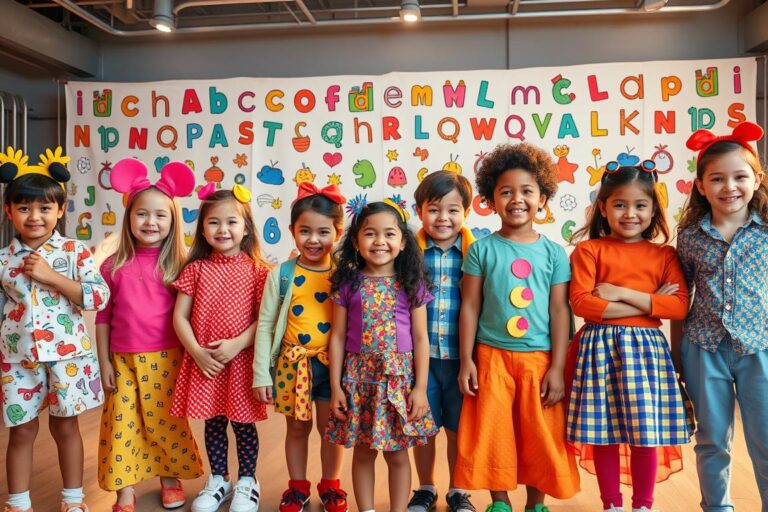Global-Inspired Kids’ Fashion: Cultural Patterns
Have you ever wondered how a simple piece of fabric can carry the essence of an entire culture? Today, children’s clothing fashion in cultural patterns is more than just a necessity—it’s a canvas for storytelling. Designers are blending traditions from across the globe with modern styles, creating pieces that celebrate diversity and cultural heritage.
From Japanese kimono jackets paired with jeans to vibrant African prints, these designs are making a statement. Parents are increasingly prioritizing cultural heritage in their choices, with 65% valuing diversity in their children’s wardrobes. This trend isn’t just about aesthetics—it’s about sparking curiosity and connecting young minds to the world.
As brands like Tea Collection and Mini Boden lead the way, they’re also focusing on ethical practices. With 57% of parents choosing eco-friendly materials, this movement is as sustainable as it is stylish. Let’s explore how these designers are weaving stories into every stitch.
The Rise of Global Fusion in Children’s Fashion
The blending of styles from around the world is reshaping children’s clothing. Designers are merging traditions to create unique garments that celebrate diversity. This fusion is not just a trend—it’s a movement.
Take Scandinavian minimalism and Japanese kawaii aesthetics, for example. These two distinct styles come together to create playful yet simple designs. The result? Outfits that are both functional and charming.
Another inspiring example is the use of Kenyan swaddling fabrics. These breathable materials are now being adapted into modern babywear. It’s a perfect blend of tradition and innovation.
Brands like Tea Collection are leading the way. They partner with global artisans to incorporate authentic patterns into their designs. This not only supports local communities but also ensures cultural authenticity.
The demand for such garments is growing. A recent report shows a 30% sales increase for mixed-cultural motif apparel. Parents are eager to introduce their children to the rich heritage of the globe.
But it’s not just about style—it’s about respect. A staggering 66% of consumers are willing to pay more for products that honor cultural traditions. This ethical imperative is shaping the future of children’s wear.
Global-Inspired Kids’ Fashion: Cultural Patterns Around the World

Every stitch in children’s clothing tells a story of heritage and identity. From the intricate embroidery of Chinese qipaos to the vibrant motifs of Ghanaian kente cloth, these garments are more than just outfits—they’re a celebration of different cultures.
In China, qipaos are crafted from luxurious silk, often adorned with symbols of longevity and prosperity. These fabrics are not just beautiful; they carry deep cultural significance. Similarly, Mexican Day of the Dead outfits feature detailed embroidery, honoring a rich history of tradition and remembrance.
German dirndls, with their traditional stitching, are a staple during festivals. These materials reflect a commitment to preserving cultural identity. Meanwhile, Ghanaian kente cloth uses bold patterns to convey messages like wisdom (Nsaa) and unity (Epa). Each design is a lesson in heritage.
Japanese Shichi-Go-San kimonos and Indian lehenga ceremony wear showcase the elegance of different cultures. French linen baby gowns, on the other hand, blend heritage with minimalist chic. These garments are perfect examples of how tradition meets modernity.
Malagasy lamba textiles and Tunisian jebbas are also making waves. These fabrics are not just stylish—they’re tools for cultural education. Whether it’s the modern embroidery of jebbas or the handwoven wraps of Ethiopia, each piece tells a unique story.
As we explore these cultural patterns, it’s clear that children’s clothing is a powerful way to connect young minds to the world. These outfits are more than just fashion—they’re a bridge to understanding and appreciating global heritage.
Ethical Considerations in Cultural Kidswear
The story behind every garment is as important as its design. In today’s world, ethical fashion is not just a trend—it’s a responsibility. When it comes to children’s clothing, honoring cultures and traditions is key to creating meaningful pieces.
Fast fashion often copies designs without respecting their origins. This can lead to cultural appropriation. Brands like Azala, however, are setting a better example. They collaborate directly with artisans, ensuring authenticity and fair compensation.
To ensure ethical practices, look for Fair Trade and GOTS certifications. These guarantee that materials are sustainable and workers are treated fairly. Transparency in production is also crucial. Brands should credit artisans and share the stories behind their designs.
Legal cases, like the Navajo tribe’s lawsuits against unauthorized pattern use, highlight the importance of respect. On the flip side, success stories like Kenyan Maasai beadwork licensing agreements show how collaboration can benefit everyone involved.
By choosing ethically made clothing, we honor heritage and support local communities. It’s a way to teach children about the world’s rich customs while making a positive impact. Together, we can create a future where fashion is both beautiful and respectful.
How to Curate a Culturally Rich Wardrobe for Kids

Building a wardrobe that reflects the world’s rich traditions is easier than you think! Start by mixing and matching pieces that celebrate diversity. Pair a Peruvian alpaca sweater with organic cotton leggings for a cozy yet stylish look. These combinations not only look great but also teach kids about global styles.
Special occasions are perfect for introducing themed outfits. Think Diwali dresses or Lunar New Year jackets. These clothes make celebrations even more meaningful. Plus, they’re a fun way to explore different trends and customs.
When shopping, look for ethical brands like Little Spoon with their vibrant Ankara prints or Kido’s block-printed dresses. These brands prioritize design and sustainability, ensuring your child’s wardrobe is both stylish and responsible.
Don’t forget the power of storytelling! Teach kids about Adinkra symbols through interactive label stories. This adds depth to their accessories and outfits, making them more than just clothes—they become lessons in heritage.
For a creative touch, try DIY projects. Upcycle saris into twirl skirts or transform old fabrics into unique pieces. These projects are not only fun but also a great way to teach kids about the importance of comfort and sustainability.
“Cultural exposure boosts childhood empathy by 34%,” according to UNESCO. This makes every outfit an opportunity to connect with the world.
By curating a culturally rich wardrobe, you’re not just dressing your child—you’re opening their eyes to the beauty of global traditions. It’s a design for life that celebrates diversity and creativity.
Conclusion: The Future of Culturally Inspired Children’s Fashion
The future of children’s clothing is a vibrant blend of heritage and innovation. With AI-driven customization, families can merge their unique stories with global styles. This fusion of traditions and modern trends is reshaping wardrobes, making them more personal and meaningful.
Brands like Patagonia are leading the way with their Fair Trade-certified Mayan-inspired line. These materials not only honor identity but also promote sustainability. Initiatives like UNICEF’s Fashion for Change are educating the next generation about the importance of diversity in design.
As Azala beautifully puts it, “Dress the world’s stories on tiny shoulders.” Let’s celebrate this future together! Join the #GlobalKidsFashion challenges on Instagram and be part of this inspiring movement.
FAQ
What is global fusion in children’s clothing?
Why is cultural diversity important in kids’ wardrobes?
How can I ensure ethical practices when buying cultural garments?
What are some ways to incorporate cultural pieces into everyday outfits?
How do designers blend history with modern trends in children’s fashion?
What role do parents play in curating a culturally rich wardrobe?
Descubra mais sobre Cutting Sewing Patterns
Assine para receber nossas notícias mais recentes por e-mail.

